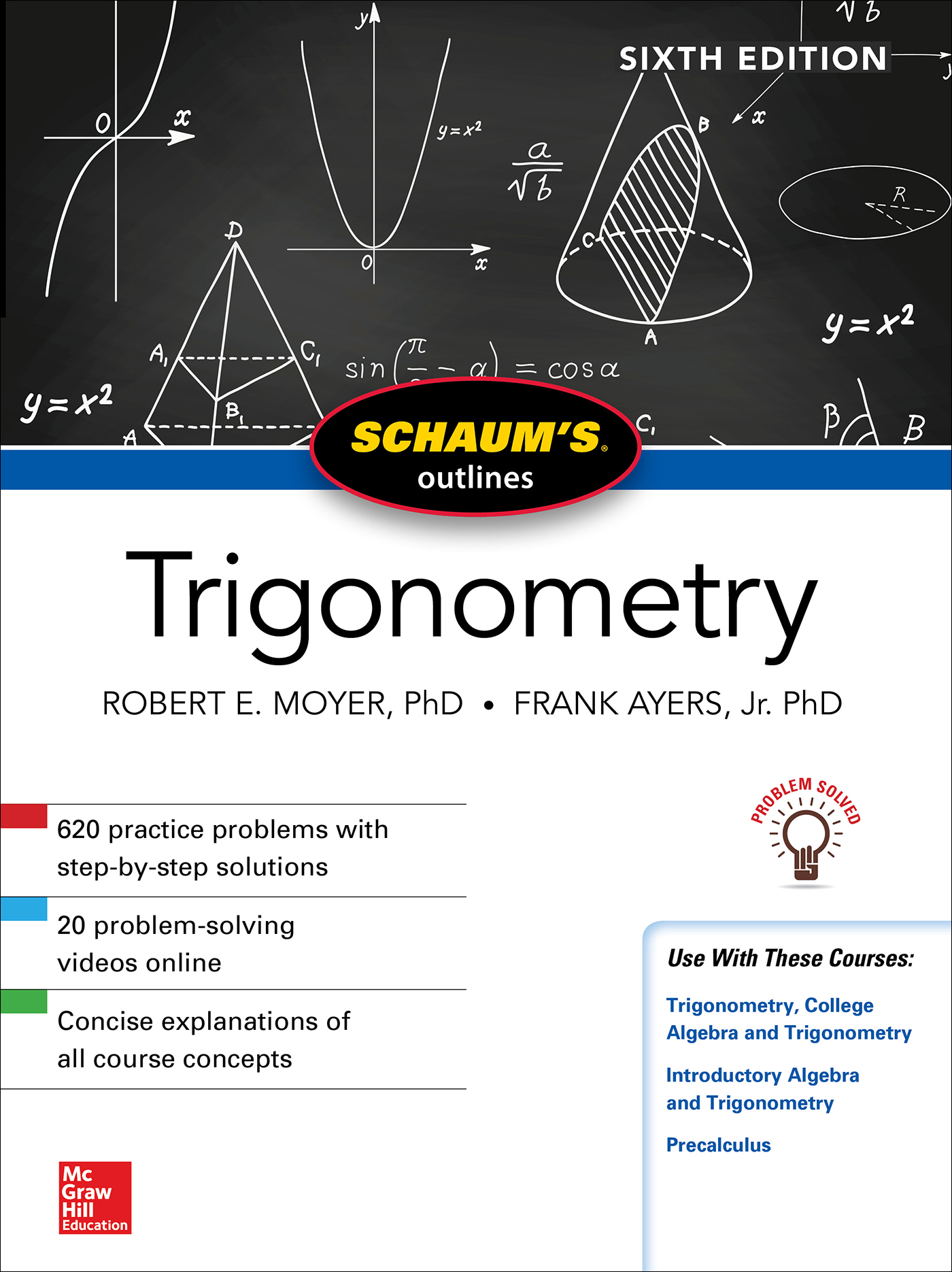Contents
Guide
Page List


Copyright 2018 by McGraw-Hill Education. All rights reserved. Printed in the United States of America. Except as permitted under the United States Copyright Act of 1976, no part of this publication may be reproduced or distributed in any form or by any means, or stored in a data base or retrieval system, without the prior written permission of the publisher. ISBN: 978-1-260-01149-4
MHID: 1-260-01149-6 The material in this eBook also appears in the print version of this title: ISBN: 978-1-260-01148-7, MHID: 1-260-01148-8. eBook conversion by codeMantra
Version 1.0 All trademarks are trademarks of their respective owners.
Rather than put a trademark symbol after every occurrence of a trademarked name, we use names in an editorial fashion only, and to the benefit of the trademark owner, with no intention of infringement of the trademark. Where such designations appear in this book, they have been printed with initial caps. McGraw-Hill Education eBooks are available at special quantity discounts to use as premiums and sales promotions or for use in corporate training programs. To contact a representative, please visit the Contact Us page at www.mhprofessional.com. Dr. ROBERT E.
MOYER taught mathematics and mathematics education at Southwest Minnesota State University in Marshall, Minnesota from 2002 to 2009 and served as an adjunct professor of mathematics there from 2009 to 2012. Before coming to SMSU, he taught mathematics and mathematics education at Fort Valley State University in Fort Valley, Georgia from 1985 to 2000. He served as head of the Department of Mathematics and Physics from 1992 to 1994. Prior to teaching at the university level, Dr. Moyer served at the K-12 mathematics consultant for seven years at Middle Georgia Regional Educational Service Agency, a five-county education cooperative in central Georgia. Dr.
Moyer taught high school mathematics for seven years in Rantoul, Illinois and for five years in Carmi, Illinois. He has developed and taught numerous inservice courses for mathematics teachers. He received his Doctor of Philosophy in Mathematics Education from the University of Illinois (Urbana-Champaign) in 1974. He received his Master of Science in 1967 and his Bachelor of Science in 1964, both in Mathematics Education from Southern Illinois University (Carbondale). The late FRANK AYRES, JR., PhD, was formerly professor and head of the Department at Dickinson College, Carlisle, Pennsylvania. He is the author of eight Schaums Outlines, including Calculus, Differential Equations, 1st Year College Math, and Matrices.
McGraw-Hill Education, the McGraw-Hill Education logo, Schaums, and related trade dress are trademarks or registered trademarks of McGraw-Hill Education and/or its affiliates in the United States and other countries and may not be used without written permission. All other trademarks are the property of their respective owners. McGraw-Hill Education is not associated with any product or vendor mentioned in this book. TERMS OF USE This is a copyrighted work and The McGraw-Hill Companies, Inc. (McGraw-Hill) and its licensors reserve all rights in and to the work. Use of this work is subject to these terms.
Except as permitted under the Copyright Act of 1976 and the right to store and retrieve one copy of the work, you may not decompile, disassemble, reverse engineer, reproduce, modify, create derivative works based upon, transmit, distribute, disseminate, sell, publish or sublicense the work or any part of it without McGraw-Hills prior consent. You may use the work for your own noncommercial and personal use; any other use of the work is strictly prohibited. Your right to use the work may be terminated if you fail to comply with these terms. THE WORK IS PROVIDED AS IS. McGRAW-HILL AND ITS LICENSORS MAKE NO GUARANTEES OR WARRANTIES AS TO THE ACCURACY, ADEQUACY OR COMPLETENESS OF OR RESULTS TO BE OBTAINED FROM USING THE WORK, INCLUDING ANY INFORMATION THAT CAN BE ACCESSED THROUGH THE WORK VIA HYPERLINK OR OTHERWISE, AND EXPRESSLY DISCLAIM ANY WARRANTY, EXPRESS OR IMPLIED, INCLUDING BUT NOT LIMITED TO IMPLIED WARRANTIES OF MERCHANTABILITY OR FITNESS FOR A PARTICULAR PURPOSE. McGraw-Hill and its licensors do not warrant or guarantee that the functions contained in the work will meet your requirements or that its operation will be uninterrupted or error free.
Neither McGraw-Hill nor its licensors shall be liable to you or anyone else for any inaccuracy, error or omission, regardless of cause, in the work or for any damages resulting therefrom. McGraw-Hill has no responsibility for the content of any information accessed through the work. Under no circumstances shall McGraw-Hill and/or its licensors be liable for any indirect, incidental, special, punitive, consequential or similar damages that result from the use of or inability to use the work, even if any of them has been advised of the possibility of such damages. This limitation of liability shall apply to any claim or cause whatsoever whether such claim or cause arises in contract, tort or otherwise.
Preface
In revising the fifth edition, the strengths of the earlier editions were retained. There will still be the 20 online videos demonstrating the solution of some of the supplementary problems in the text.
It is still possible to solve all the problems without the use of a calculator by using the tables provided, by using a basic scientific calculator, or by using a graphing calculator. The text is flexible enough to be used as a primary text for trigonometry, a supplement to a standard trigonometry text, or as a reference or review text for an individual student. The book is complete in itself and can be used quite well by students studying trigonometry for the first time and by students needing to review the fundamental concepts and procedures of trigonometry. It is a helpful source finding a specific piece of trigonometric information needed in another course or on a job. Each chapter contains a summary of the necessary definitions and theorems for a particular aspect of trigonometry followed by a set of solved problems. These solved problems include the proofs of theorems and the derivation of formulas.
Each chapter ends with a set of supplementary problems with their answers. Triangle solution problems, trigonometric identities, and trigonometric equations require a knowledge of elementary algebra and basic geometry. The problems have been carefully selected and their solutions spelled out in sufficient detail and arranged to illustrate clearly the algebraic processes involved as well as the use of the basic trigonometric relations. ROBERT E. MOYER
Contents

Angles and Applications
1.1 Introduction
Trigonometry is the branch of mathematics concerned with the measurement of the parts, sides, and angles of a triangle.
Plane trigonometry, which is the topic of this book, is restricted to triangles lying in a plane.
Trigonometry is based on certain ratios, called trigonometric functions, to be defined in the next chapter. The early applications of the trigonometric functions were to surveying, navigation, and engineering. These functions also play an important role in the study of all sorts of vibratory phenomenasound, light, electricity, etc. As a consequence, a considerable portion of the subject matter is concerned with a study of the properties of and relations among the trigonometric functions.




 Copyright 2018 by McGraw-Hill Education. All rights reserved. Printed in the United States of America. Except as permitted under the United States Copyright Act of 1976, no part of this publication may be reproduced or distributed in any form or by any means, or stored in a data base or retrieval system, without the prior written permission of the publisher. ISBN: 978-1-260-01149-4
Copyright 2018 by McGraw-Hill Education. All rights reserved. Printed in the United States of America. Except as permitted under the United States Copyright Act of 1976, no part of this publication may be reproduced or distributed in any form or by any means, or stored in a data base or retrieval system, without the prior written permission of the publisher. ISBN: 978-1-260-01149-4